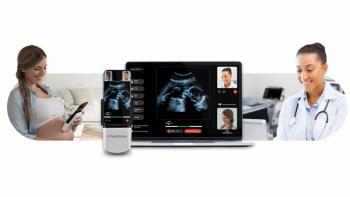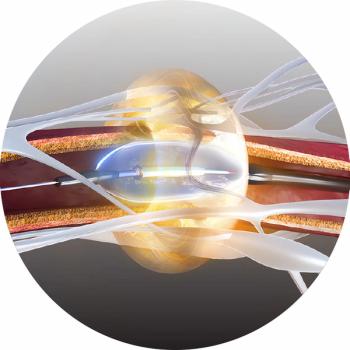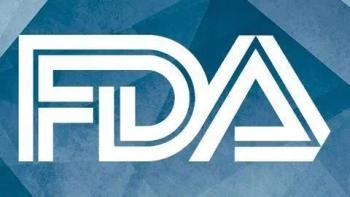
Italian study questions screening ultrasound's value
Enthusiasm about ultrasound as a complementary screening tool for women with dense breasts may be unfounded, according to an Italian radiologist who presented study findings at the European Congress of Radiology in Vienna. But a U.S. luminary has a different opinion.
Enthusiasm about ultrasound as a complementary screening tool for women with dense breasts may be unfounded, according to an Italian radiologist who presented study findings at the European Congress of Radiology in Vienna. But a U.S. luminary has a different opinion.
Dr. Stefano Ciatto of the Centro per lo Studio e la Prevenzione Oncologica in Florence studied a consecutive series of 20,478 women who underwent mammography screening from 2000 to 2005 at the Raphael Clinic. Since 1990, the clinic has employed a protocol dictating routine bilateral breast ultrasound in asymptomatic women with negative mammography and dense breasts.
Of the 20,478 women who were screened with mammography, 7615 had dense breasts and received a follow-up ultrasound. Ultrasound detected 35 additional cancers, equivalent to about 18% of all cancers detected in the study by both modalities (191). Most of the cancers detected with ultrasound were small and low grade, suggesting that ultrasound has value as a complementary tool in finding cancers at earlier stages, when the potential for treatment success is greater.
A subsequent review of the original mammograms in the 35 cases found that only 17 cancers identified by ultrasound were not seen retrospectively on mammography by a breast imaging expert. Researchers subsequently downgraded ultrasound's detection rate to only 9.3% of total cancers found in the study. The finding suggests a need for routine review of radiologists' mammography interpretations but also raises questions about ultrasound's ultimate contribution, Ciatto said.
The results also show that ultrasound may not have value in all settings. It may prove to be more useful for following up mammograms performed by radiologists who are less skilled in breast imaging. Clinical studies must account for skill level, he said.
"We should not use inexperienced radiologists in mammography and help them with ultrasound. We should start with very experienced radiologists, which we don't do at the moment, and see whether ultrasound helps," Ciatto said. "I am not saying that ultrasound does not help at all, but we should not be too enthusiastic about the results."
One downside of breast ultrasound is its false-positive rate of up to 3%, Ciatto said. In his study, the biopsy ratio of benign to malignant findings with ultrasound was 10:1, which is high compared with mammography's benign to malignant screening biopsy ratio of 1:1.
"Ultrasound has a lower threshold. You see many things that may be nothing, and you still have to biopsy," he said.
Ultrasound's added value comes at a high cost. It would be necessary to perform 1300 ultrasound exams to find one cancer, according to the study. The cost per patient averaged $25, but the cost per cancer detected totaled more than $29,000.
"The cost is incredible. To the woman it is not very high, but the cost per cancer detected is five times the cost with mammography screening," Ciatto said.
Ciatto concluded that the ongoing American College of Radiology Imaging Network 6666 trial on breast ultrasound screening will shed more light on the issues raised by his study.
Ciatto's results were viewed favorably by Dr. Wendie Berg, the principal investigator for the ACRIN trial, which is jointly funded by the National Cancer Institute and the Avon Foundation.
"It is encouraging that in all series of screening ultrasound to date, the vast majority of the cancers seen only with ultrasound have been small, node-negative invasive breast cancers," Berg said.
The detection of such cancers should reduce breast cancer mortality, according to Berg, to the extent that the natural history of most breast cancers can be predicted at the population level by size and nodal status.
Also, in the subgroup of women with dense breasts, Ciatto detected 34 cancers at initial mammography in women, Berg said. Therefore, ultrasound doubled the detection rate in that group.
The low specificity of breast ultrasound demonstrated in Ciatto's trial is a valid concern when considering screening healthy women, Berg said, but this is likely to be artificially low, due to the ease of performing ultrasound-guided aspirations and biopsies. Furthermore, the specificity of screening ultrasound may well improve with subsequent screening rounds and increasing operator experience.
Berg questions Ciatto's estimation of cost per cancer detected. Even if the number of cancers seen on ultrasound only was as low as 17 per 7615 women, or 2.2 per 1000, this may still be cost-effective when considering stage at diagnosis, reduced costs for treating earlier disease, predicted cost per year of life saved, and improved quality of life, she said.
"The results of Ciatto et al add further support to the use of screening ultrasound in women with dense breasts. ACRIN protocol 6666 will address whether the encouraging results using screening breast ultrasound in single center studies can be reproduced across a variety of private practice and academic centers," she said.
Newsletter
Stay at the forefront of radiology with the Diagnostic Imaging newsletter, delivering the latest news, clinical insights, and imaging advancements for today’s radiologists.





























